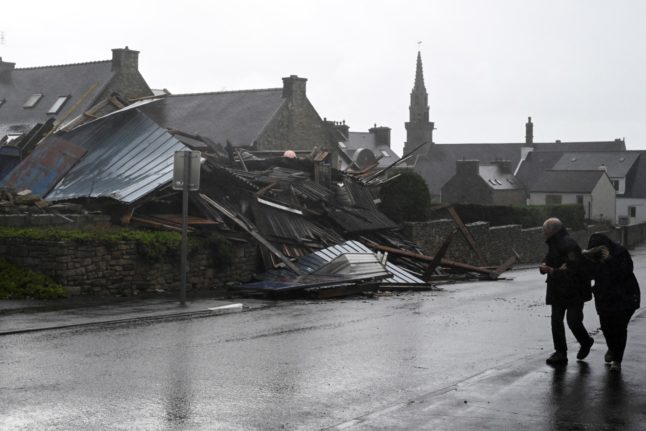In its annual survey of disaster damage, Swiss Re noted that the loss total was down from the $196 billion recorded in 2012, the year that Hurricane Sandy battered the United States.
Of the $140 billion recorded in 2013, insured losses accounted for $45 billion.
The most expensive disaster for insurers was the massive flooding in central and eastern Europe in May and June last year, with Germany, the Czech Republic, Hungary and Poland hardest hit.
Total economic losses in the floods hit $16.5 billion, of which $4.1 billion was covered by insurers.
In July, parts of France and Germany were struck by severe hailstorms, causing economic losses of $4.8 billion.
The damage in Germany alone generated most of the entire insured loss of $3.8 billion — the largest ever figure for a hailstorm worldwide, Swiss Re said.
Floods in Canada in June caused losses of $4.7 billion, of which $1.9 billion was insured.
The next costliest disaster for the insurance sector was the wave of thunderstorms and tornadoes in the United States — including a freak twister in Oklahoma — which left insured losses of $1.8 billion and inflicted $3.0 billion in overall economic damage.
Poor nations bear the brunt
While rich countries saw the most expensive single disasters in terms of insurance claims — the norm, given their wealthier economies and extensive insurance penetration — it was the developing world that continued to bear the brunt of lives lost and overall economic damage.
The vast majority of the 26,000 disaster deaths last year — up from 14,000 in 2012 — were in developing nations.
Asia, where like other poor regions only a small percentage of the population has insurance, was hardest hit.
Typhoon Haiyan in the Philippines in November brought some of the strongest winds ever recorded, coupled with heavy rains and storm surges.
Some 7,500 died or went missing, and over four million were left homeless.
Haiyan inflicted $12.5 billion in economic damage, of which insured losses represented just $1.5 billion, Swiss Re said.
The second biggest humanitarian disaster was the June flooding in India, which claimed 6,000 lives. It did not make it into Swiss Re's top ten table of economic losses and insured damage.
Thousands of lives were saved when Cyclone Phailin made landfall in India in October, Swiss Re underlined, hailing the country's effective risk reduction programme which included a pre-planned evacuation drive.
But with Phailin destroying some 100,000 homes and more than 1.3 million hectares of farmland, total economic losses were $4.5 billion, of which just a tiny proportion was insured.
Swiss Re said the insurance industry needed to rethink how it could help the wider world deal with the fallout of disasters.
"The protection gap, the difference between total losses and insured losses, has progressively widened over the last 40 years," it said.
"Disaster events continue to generate increasingly total losses alongside ongoing economic development, population growth and urbanization," it added.
It also echoed concerns that climate change driven by emissions of heat-trapping greenhouse gases was expected to lead to more frequent and severe extreme weather.



 Please whitelist us to continue reading.
Please whitelist us to continue reading.
Member comments